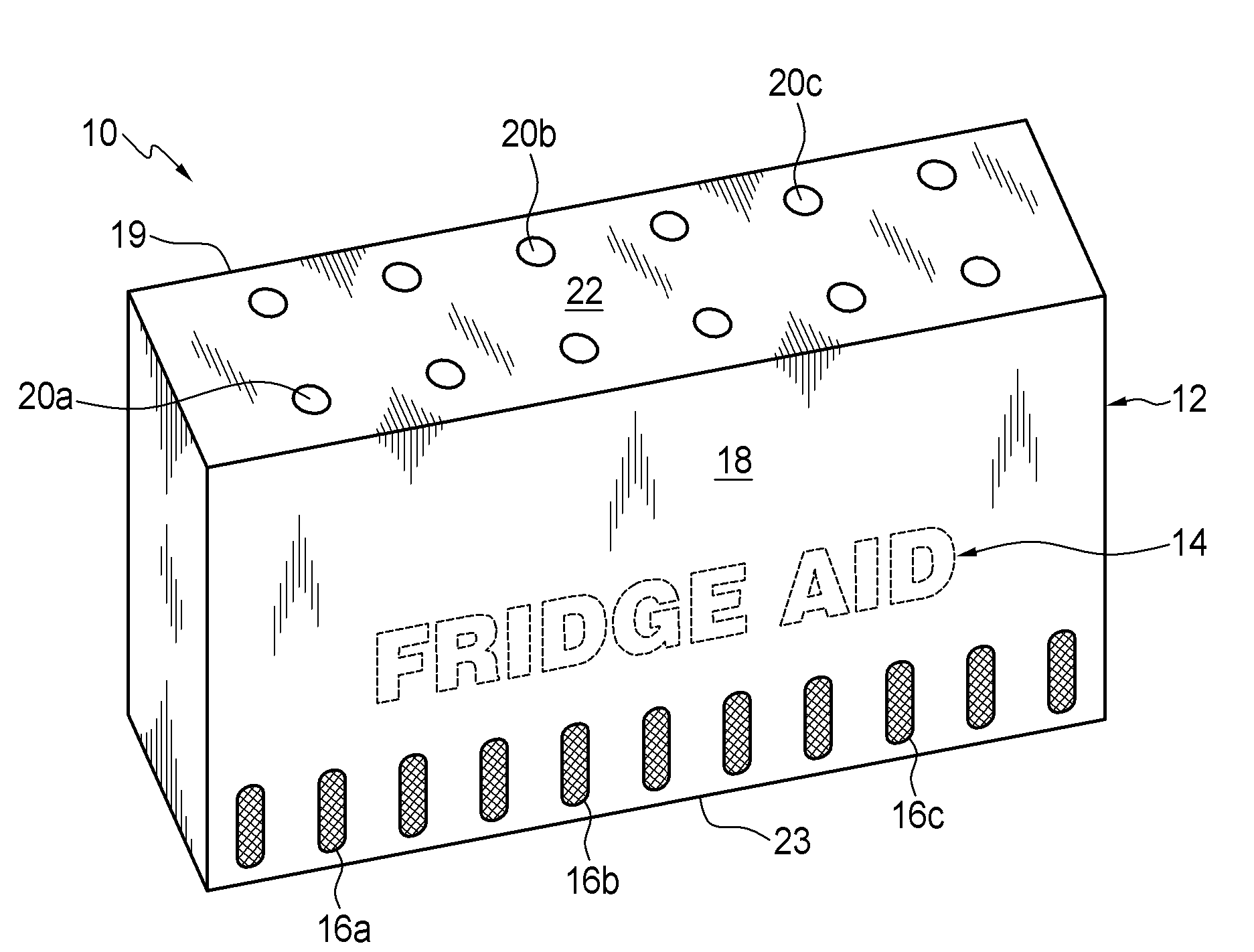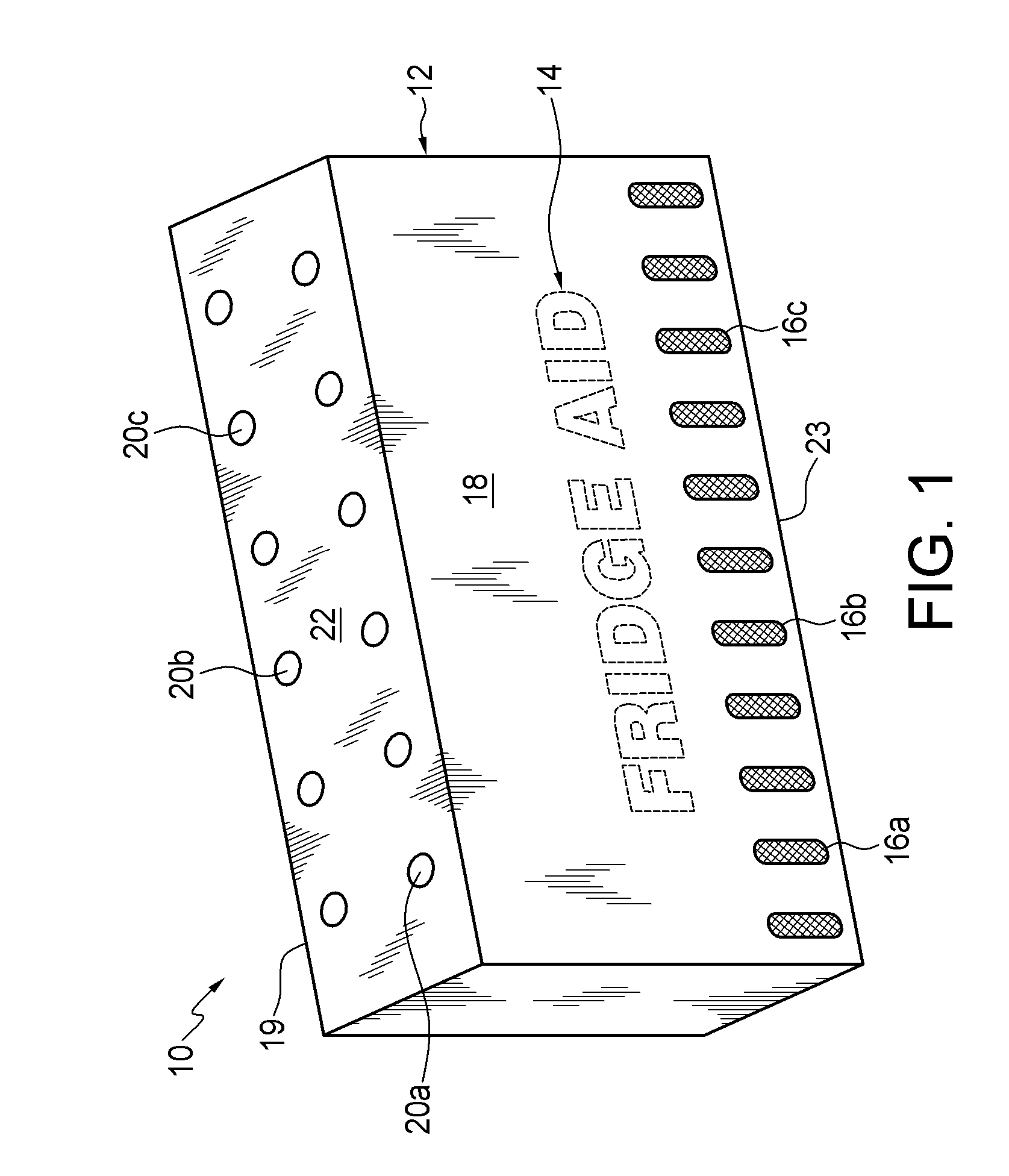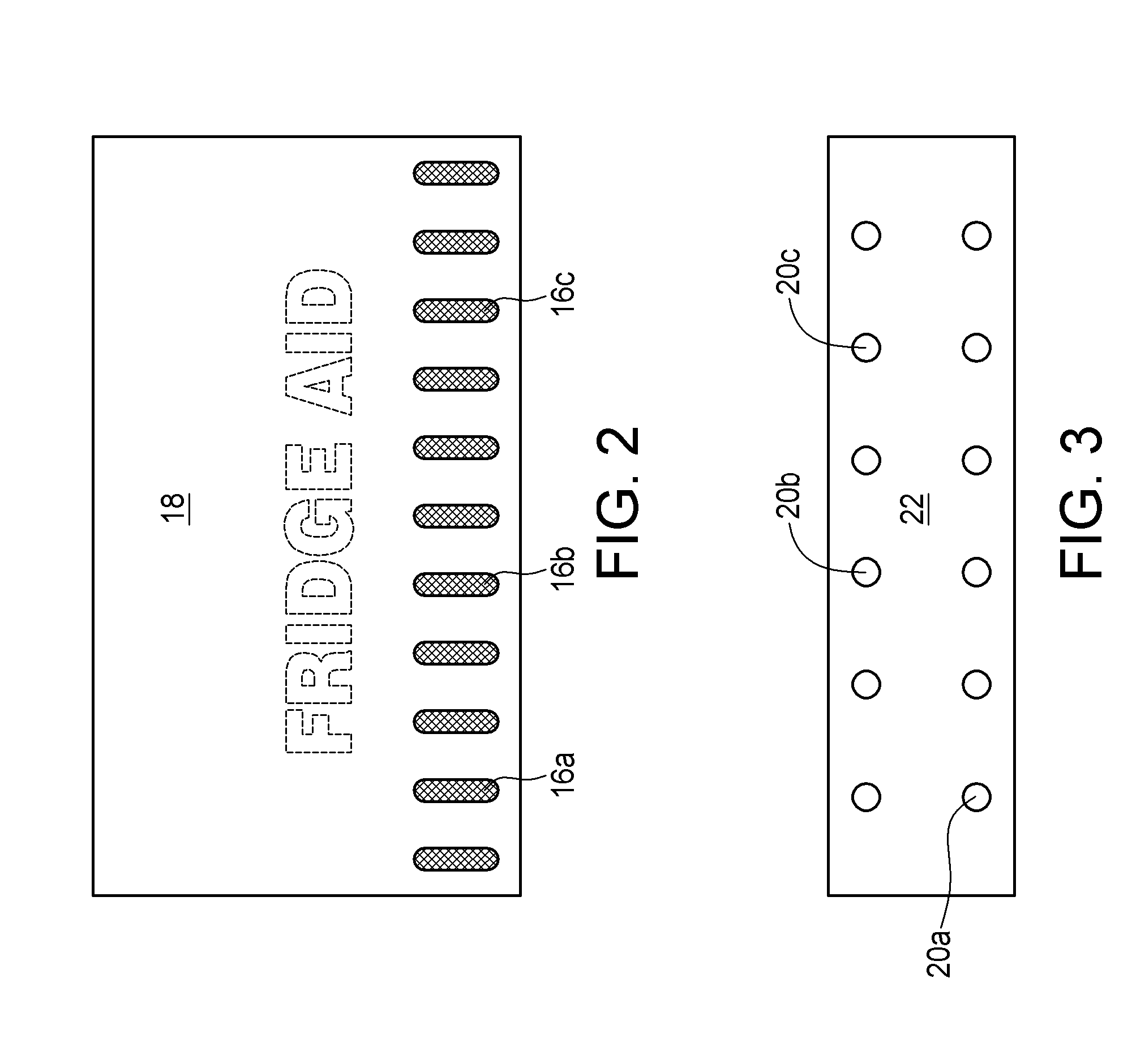Air deodorizer
- Summary
- Abstract
- Description
- Claims
- Application Information
AI Technical Summary
Benefits of technology
Problems solved by technology
Method used
Image
Examples
Embodiment Construction
[0033]Referring to the drawings and first to FIG. 1, an improved air deodorizing device 10 for absorbing odor molecules in a refrigerator or freezer is shown. The device 10 includes a housing 12 which is preferably formed from a paper-based construction material such as recycled cardboard. This provides an environmental friendly, biodegradable housing to which designs or trademarks can be readily applied. In this example, a trademark 14 has been applied to the housing 12. FRIDGE AID is a registered trademark of Nu-Rich Enterprises Ltd. of 3338 Venables Street, Vancouver, British Columbia, Canada V5K 2S8. In other examples other trademarks may be applied to the housing 12. For example, the trademark ICE AID may be applied to device which designed for use in the freezer. ICE AID is also a registered trademark of Nu-Rich Enterprises Ltd.
[0034]There is a plurality of openings 16a, 16b, and 16c extending through a first side 18 of the housing 12. There is also a plurality of openings 20a...
PUM
| Property | Measurement | Unit |
|---|---|---|
| Diameter | aaaaa | aaaaa |
| Length | aaaaa | aaaaa |
| Length | aaaaa | aaaaa |
Abstract
Description
Claims
Application Information
 Login to View More
Login to View More - R&D
- Intellectual Property
- Life Sciences
- Materials
- Tech Scout
- Unparalleled Data Quality
- Higher Quality Content
- 60% Fewer Hallucinations
Browse by: Latest US Patents, China's latest patents, Technical Efficacy Thesaurus, Application Domain, Technology Topic, Popular Technical Reports.
© 2025 PatSnap. All rights reserved.Legal|Privacy policy|Modern Slavery Act Transparency Statement|Sitemap|About US| Contact US: help@patsnap.com



